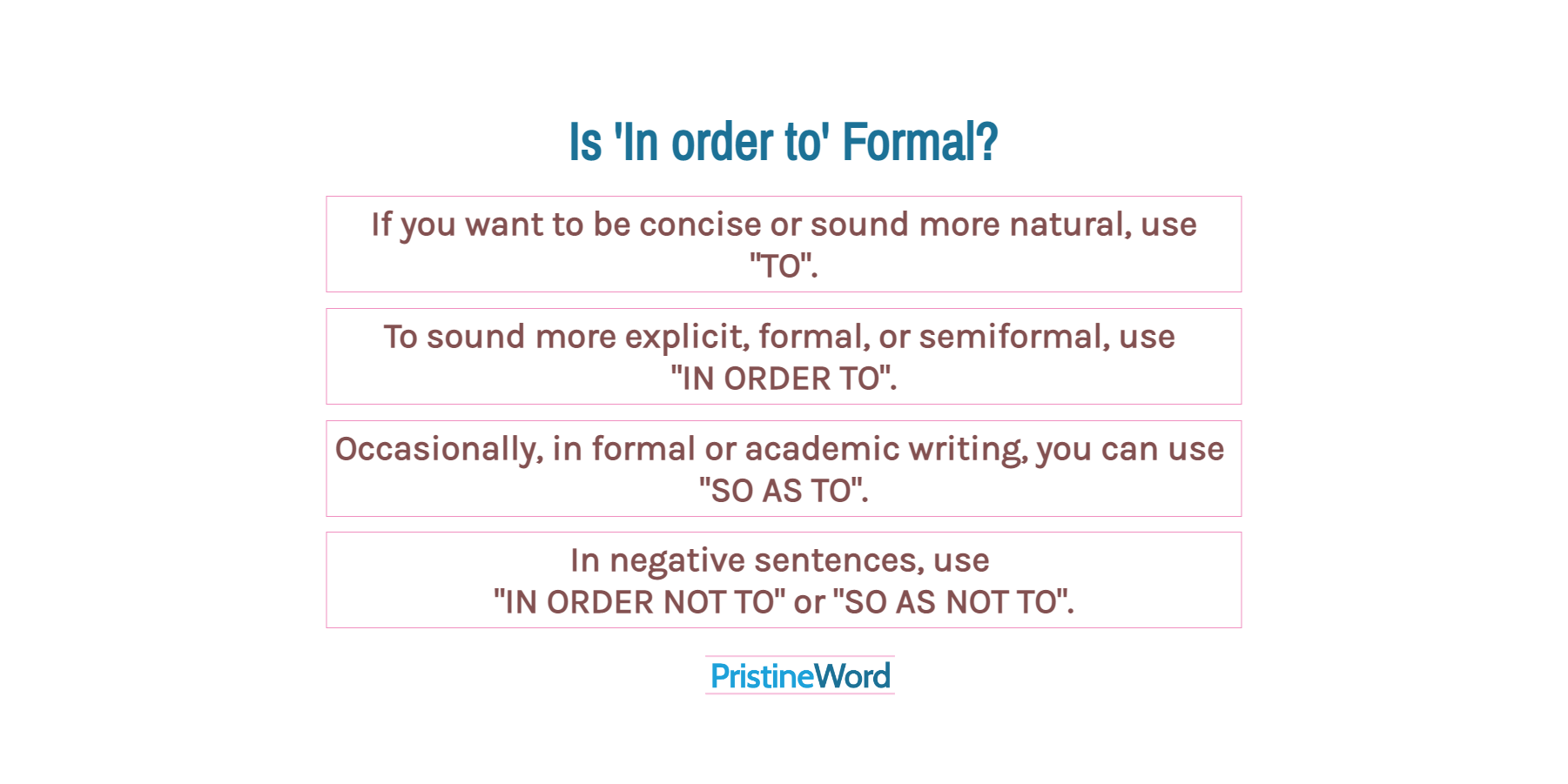We commonly use "in order to" in formal and neutral contexts, but it can be introduced in a wide range of situations.
"In order to" is a linking word that we use to express purpose. We commonly use "in order to" in formal and neutral contexts, but it can be introduced in a wide range of situations.
You should read these books in order to improve your education and skills.
They don’t need to attack the main areas in order to win.
In colloquial or spoken language, you can simply use "to" instead of "in order to", and your sentence will be correct. In fact, "in order to" is more common in written English than in spoken English.
We need to hire a new software developer to complete the project.
With negative sentences, however, we generally use "in order not to" rather than "not to".
I will sign this today in order not to waste time.
Alternatively, you can use "so as to" instead of "in order to". "So as to" is much less frequent and also more formal.
Our company always uses written agreements so as to prevent legal uncertainty.
If you want to be concise or sound more natural, use "to". To be more explicit, formal, or semiformal, use "in order to". Occasionally, in very formal writing, you can use "so as to". In negative sentences, use "in order not to" or, in very formal language, "so as not to".
You can also start a sentence with "in order to" for emphasis. In this case, add a comma after the introductory phrase starting with "in order to".
In order to collect relevant data, we performed a search for the file.
We'll add here that "in order to" is a compound preposition that has an infinitive as its object, and therefore cannot be followed by a noun or a gerund.
In order to succeed, our company has to sell its products at competitive prices.
In order to succeeding, our company has to sell its products at competitive prices.

